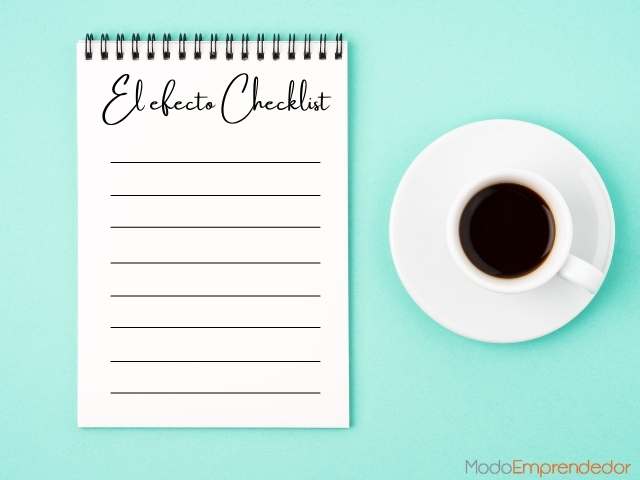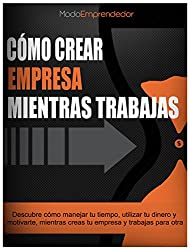
In this article, you will learn what the Checklist effect is and how to use it to enhance your life in a practical and effective way.
Are you 100% happy with the life you have? Can you say that you are happy?
I don’t know exactly your answer but I know that in the back of your mind, you know that you can do better. We all have an opportunity to improve.
The point is that we live in a world where objectives are distorted, because social networks show us every day that the ultimate goal is to have the latest model car and millions of followers.
However, if we look a little further, we realize that these “goals” have nothing to do with a good life. (I’m not saying it’s wrong that you can buy a Ferrari, I just want to make it clear that living isn’t all about that.)
For this reason I want us to go to the roots of what a better life can be and that is when we come to the habits. Surely you have read and heard many times the importance of creating good habits. and you will know the importance of systematizing behaviors to save time in decision making.
That is to say… If you get up every day and you don’t know what to do, you will waste time deciding. On the other hand, if you know that you just get up, you should make your bed, exercise, take a bath, have breakfast and start your study or work activities; you don’t waste time.
Additionally, not having a routine is a daily mistake, simply because in each new decision we can fail and decide the wrong thing. The interesting thing is that if you want to improve this area of your life (which will ultimately improve your whole life) you can do something completely simple: Use the Checklist effect.
What is the Checklist effect?
It is to reduce the number of mistakes you can make by following a list of tasks. It seems simple and I would understand if you doubted the potential of a task list…But if I told you that the checklist effect is responsible for reducing the mortality rate by 47% in American hospitals, or saving the lives of hundreds of pilots in the Second World War; It doesn’t seem trivial.
In his book The Checklist Manifesto (checklist effect in its Spanish version), the author and surgeon Atul Gawande, teaches us how to do things well, in different areas of life, simply using a list of tasks; and among the many examples that he gives about the importance of a checklist, I want to share one with you.
The story it tells is set in October 1935. boeing corporation presented a new aircraft to the US army, with considerable improvements. Mainly it was capable of carrying 5 times more bombs and had 2 more engines than the previous version, which gave it more speed and autonomy; characteristics that were enough to earn him the contract.
However, at the moment of seeing it in action, the worst happened: it rose 300 feet, fell and the pilot died.
The aircraft was billed as: “a lot of aircraft to be flown by one man”. However, investigations revealed no mechanical failure, so Boeing set out to find a way to fly the “unflyable” plane. The main complication was that the pilot who died was the best pilot, with more experience and more training. What could they do? How could they eradicate errors and not expose lives?
You already know the answer: The checklist effect. They just put task lists for the 3 phases of flight: take off, landing, taxi.
That simple change not only allowed them to fly the plane, there were no accidents in over 1.8 million miles of flight, they were able to close the deal with the government, and ultimately, they had a huge advantage in winning World War II a few years after the war. presentation of the new model.
The bug that prevents the Checklist effect.
Your life is like an airplane, depending on how you take care of it and how you handle it, it will fly or not. For Atul Gawande there are 2 faults that you must avoid if you want to fly far: Ignorance and ineptitude.
Sometimes there is no knowledge on how to do things right, that is ignorance. On the other hand, if we know how to do things right but don’t, that’s ineptitude.
With respect to what you do not know to do things well (ignorance), you only have to learn more but that is a matter of time. But as for what you already know and don’t do… the checklist effect is the solution. A simple to-do list is the ideal reminder so you don’t stop doing what’s important and so you can fly much higher.
Remember that the pilots (and surgeons, architects, programmers, etc) They don’t know what to do, but a simple list will help them not to forget simple but essential steps.
What an ideal checklist should have.
Please read this short excerpt from the book:
“The fear that people have about the idea of adherence to the protocol is rigidity. They imagine themselves as mindless automatons, head down on a to-do list, unable to look out the windshield and cope with the real world. But what they find, when a to-do list is well done, is the exact opposite. The to-do list gets the bullshit out of the way, the routines your brain shouldn’t waste time on…and let it soar to focus on the hard stuff.”
It is relevant to me how Atul Gawande emphasizes the need for a checklist from a resource optimization perspective. In this case, mental capacity for the most important challenges. Who doesn’t want to be more capable? The greater the capacity, the more chances of having the life we want.
Additionally, a checklist gives you the option to systematize the tasks that guarantee you to have a good day. Remember that you already know what is good for you (exercise, good nutrition, meditate, read, etc.), so you already know what to do… but how?
It is important that your checklist has 3 characteristics:
- Short: It is useless to write down 18 tasks and not have time to do them all.
- Accurate: Do not write tasks that are difficult to understand. Everything you write must be a specific action.
- Practice: Write tasks that you can do. For example, “save the world” is a very interesting objective, but if you don’t have it broken down into activities that you can do, it will be difficult for you to achieve it.
Just list 3 activities that will guarantee you a good day. Before I gave you some examples. Think of those 3 things that help you be well and write them down. Preferably with an hour to do them. (This will help you create a routine.)
Start with only 3 tasks a day and when you get into the habit of completing them, cross them off your checklist, you can create a checklist for the first hours of the morning and another one for before going to bed.
Conclusion.
The checklist effect is a perfect alternative for “good morning” to be almost every day. So having great days is the norm and not the exception, it is within the reach of your will.
As you have already seen, something so simple has enormous power because it keeps us from making “silly” mistakes, and it directs us to use our minds on what is really important.
I hope this information helps you and encourages you to create your Checklist 🙂
And remember, if you are really interested in creating your own business, you can read our book “How to create a company while working: Discover how to manage your time, manage your money and motivate yourself while creating a company and working for another” , where you will find all the information you need to found your own company, without having to leave your job.


